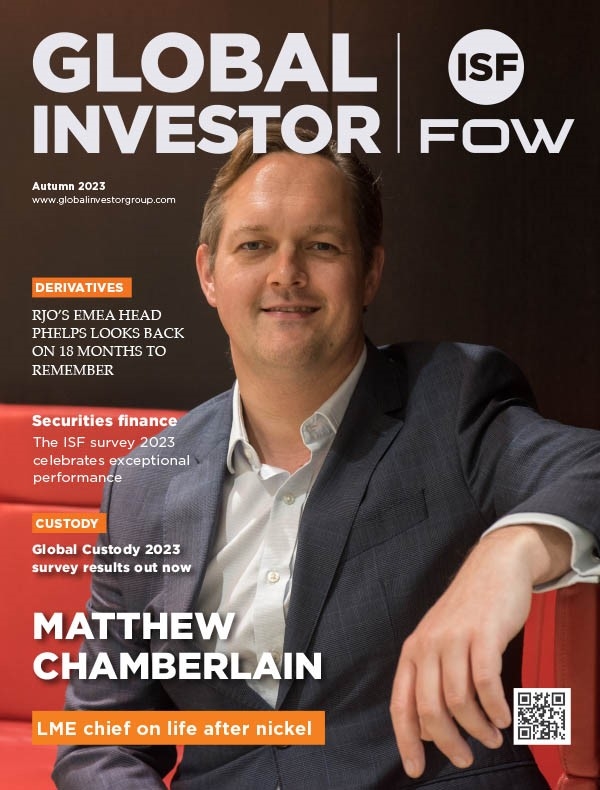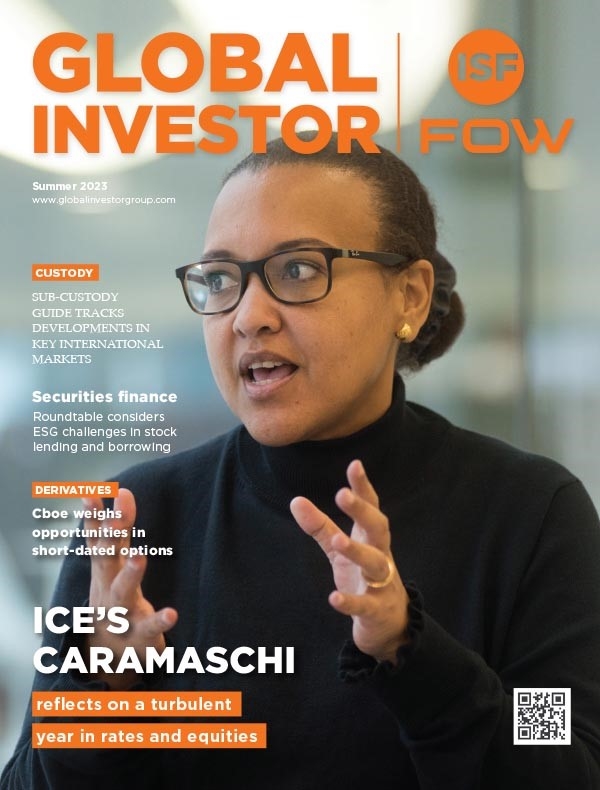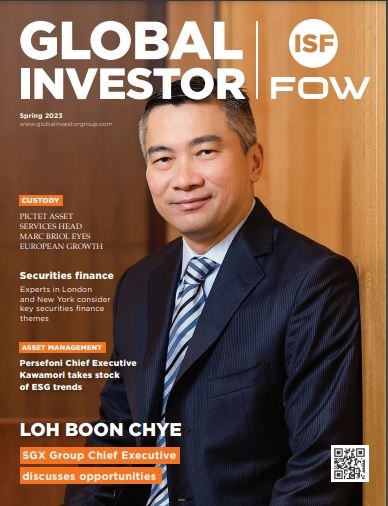HSBC: The march of the new
HSBC experts:
Colin Brooks, global head of sub-custody and clearing
Clive Triance, global head of sales and business development banks and broker-dealers
Arindam Das, regional head of securities services, Mena
Bring us up to date with the progress towards allowing foreign investors in Saudi Arabia.
Arindam Das: The draft Qualified Foreign Institutional Investor (QFII) regulations published in August 2014 introduced the eagerly awaited framework by means of a consultation paper on direct investment by foreign investors. It included a set of high-level regulatory guidelines specifying which categories of institutional investors were eligible to make such investments.
It outlined requirements over size – AuM of at least $5bn, which may be reduced to $3bn at the discretion of the regulator, the Capital Market Authority (CMA) – as well as a minimum track record – five years – and requirements that investors be from jurisdictions that are acceptable to the CMA.
It also detailed the permissible foreign ownership limits and provided a framework for how authorised persons in Saudi Arabia will be able to facilitate access to the local market for eligible foreign investors. In November 2014 participants in the Saudi market and beyond provided feedback on this consultation paper to the CMA, and we are now awaiting the publication of the final regulations.
Investor interest abroad is certainly considerable. The roadshows we have been conducting through last autumn, as part of the process to survey our clients and communicate to them how to prepare for the change, showed that they are very positively orientated towards the new market.
The size requirements were not favorable to everyone – mid-sized asset management firms would be excluded to begin with. There are also concerns about the T+0 settlement cycle and whether or not this will be increased before the market opens up. There is also the question of the market migrating to an independent custody model.
This initiative is being led by the Saudi Stock Exchange and it may not necessarily synchronise with the timeline of the market opening. However, none of these aspects should be a show stopper for the market opening and HSBC is indeed able to present solutions to its clients in order to facilitate smooth access to the market.
What impact will the inclusion of Saudi Arabia into the MSCI Emerging Market (EM) Index have on its capital markets?
Das: According to HSBC Global Markets Research estimates, the inclusion of Saudi Arabia in the MSCI EM Index should bring in an additional $24bn of investor flows into Saudi Arabia. This may be a relatively conservative estimate – other analysts put the figure at nearer $45bn.
If Saudi were instead to be included in the MSCI Frontier Market Index this figure would be nearer to $400m. However, we think this is very unlikely because the frontier index would end up heavily skewed towards Saudi Arabia, which would comprise roughly 42% of the total. The MSCI inclusion process will take time, though. The earliest the announcement for the upgrade can be made is June 2016, unless the annual review cycle is changed, which will then be effected in June 2017.
There is also a lot to be excited about beyond Saudi Arabia. For the UAE and Qatar, the latest re-balancing, last November, saw a significant stream of inflows. The UAE, interestingly, is setting its sights on developed market status within five years.
This means discussion on CCPs, HSBC experts Colin Brooks, global head of subcustody and clearing Clive Triance, global head of sales and business development banks and broker-dealers Arindam Das, regional head of securities services, Mena The march of the new H stock lending, market making and ETFs among other aspects.
How important has Shanghai-Hong Kong Stock Connect been in opening mainland China to foreign investors?
Colin Brooks: It is worth laying out a bit of context to the Shanghai-Hong Kong Stock Connect in China. The initiative, which is now at its second stage, should be seen as the latest step in a long process of increasing the accessibility and appeal of Chinese capital markets.
This process started with B-shares in 1992 and progressed through QFII in 2003, Renminbi QFII in 2011, and has included the development of an interbank bond market and the improvement of corporate governance. Stock Connect now provides access to the Chinese market to classes of investor that could not necessarily meet the QFII/ RQFII requirements, for example the requirement for a two to five-year track record or the $500m minimum value for assets under administration under the QFII scheme.
Clive Triance: One of the great challenges that any EM faces in developing its capital markets and economy is in developing the investor base from a purely retail one, through one that comprises a combination of retail and institutional investors, towards a market focused on creating an active retail and institutional investor base.
A feature of a mature market is that it has depth and liquidity in both primary instruments and the derivatives based on them. China is beginning to move in this direction.
Brooks: In its second stage, Stock Connect has resolved a number of the challenges that investors faced in the first stage. Stock Connect 2 removes the requirement for the pre-delivery of securities into the brokers account – it is sufficient now for the assets to be visible in the custodian account of the fund.
The HKSE has also brought in a form of delivery-versus-payment. While it is true that investors have expressed concern at some aspects, the fact that 38% of the quota has been used indicates a good number of investors are comfortable with the arrangement.
What are the prospects for China’s mainland capital markets to be included in the EM index?
Das: There is speculation that MSCI could begin its evaluation in June 2015, with a view to inclusion in 2016.
Historically, the precise reasons for China’s exclusion have not been stated but it is thought that restrictions on cross-border investment such as the quota system and foreign ownership limits, as well as considerations around repatriation of funds and the T+0 settlement cycle are among the obstacles.
It is worth bearing in mind, though, that the ultimate call about whether China will end up in investor indices comes from investors themselves – if they vote with their feet, by abandoning indices that do not contain China mainland exposure, index providers may adjust their selection criteria.
Brooks: One feature that has been suggested is that China could initially make up a relatively small proportion of the MSCI EM index, before progressively increasing its share. RQFII also has a role for Chinese economic policy abroad, as it works to widen the net of authorised investors. One example is the recent extension of $30bn allowance to Qatar.
Are investors convinced that the appeal of India will outlast the honeymoon period of the new Modi government?
Das: In India, the rupee has been appreciating, after a long period of devaluation, which is helping to create a sustained surge of investment in the stock market. The political element has been especially important. The early optimism of investors towards Narendra Modi’s victory has been sustained by a powerful budget and strong support provided by the sensible policies of the central bank governor.
The Foreign Portfolio Investment (FPI) Regulations released at the beginning of last year have worked to integrate the various routes of access to Indian capital markets into a single route that has encouraged investors from abroad. Also, custodians are now delegated the responsibility for collecting the required information on investors thereby effectively becoming gatekeepers for that access. All of these reforms have worked to make the market more investor friendly.
Brooks: HSBC was closely involved in the process by which the government sought to understand how to make Indian capital markets more attractive to foreign investors. Interestingly, this is an approach that the CMA has taken more recently in Saudi Arabia, as well. Our head of securities services in India was the key representative among the custodian banks to participate in the SEBI-constituted committee that reviewed and guided the changes to market access.
This is a good example of what we try to achieve in HSBC – we consider it a key objective for our in-country securities services managers to provide technical input to governments and regulators in the process of helping them to improve the environment for our clients and for inward investment. This has certainly been true in the cases that we are discussing today in relation to Saudi, India and China.
Brooks: The need for infrastructure investment will help to drive flows into India and the government has shown that it is committed to increasing the appeal of capital markets to foreign investors. How this will evolve in terms of its development relative to China is interesting. While India has the benefit over China of a younger population, China is now working to relax its one-child policy further – there has already been some relaxation – which will have an effect on its demographics.
Triance: In China, specifically, as more countries are now
covered by the RQFII regime, HSBC has been the first subcustodian to service
customers in almost every new market.



